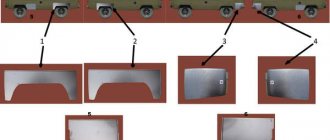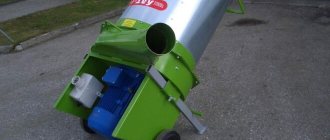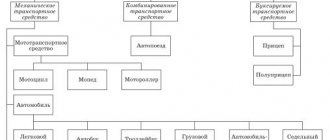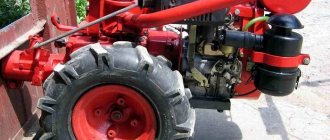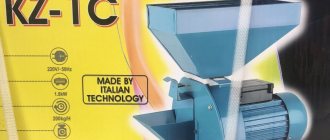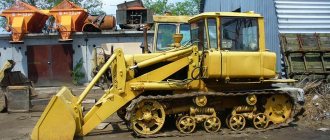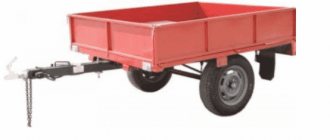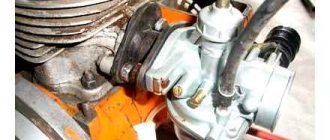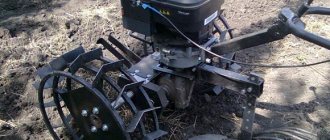Hay and straw choppers can be divided into 2 broad categories. These are industrial and domestic. The former are suitable for mass processing of raw materials. They are used in large industries, livestock farms and more.
Homemade ones are compact in size. Suitable for domestic use when you need to meet the needs of a small household.
And if it is better to buy industrial devices from a trusted manufacturer, then equipment for home use can be assembled with your own hands.
How and why cutting is done
Basically, hay and straw are chopped to transform raw materials into mulch, as well as to accelerate decay.
Also, you cannot do without a chopper (shredder) in the following situations:
- fertilizing plantings in the garden;
- creation of a substrate used for growing vegetables;
- production of high quality humus;
- production of fuel cells;
- preparation of the substrate that is used for growing mushrooms;
- production of complementary food for livestock and poultry.
There are different cutting methods. And for each of them the corresponding type of tools is used.
Therefore, slicing can be done using:
- scissors;
- knives;
- crushers;
- shredders.
Knives and scissors are usually used in cases where straw is cut into pieces of a certain length. At the same time, the volumes of processed raw materials are small.
If you need to grind at least 10 kilograms of raw materials, then it is better to use mechanized tools, the operating principle of which is based on a rotary grinder.
Shredders for hay and straw can also be divided into:
- manual;
- electrical;
- powered by PTO;
- operating from the engine.
In the case of the PTO, we are talking about the power take-off shaft.
Hand tools are the simplest in design and also the cheapest. But their productivity is low, so they are not used so often. Finding factory manual shredders on sale is almost impossible. They have been discontinued for a long time.
Electric ones are the most popular. They have a low price, but at the same time good performance indicators. The only downside is that such units depend on the availability of a source of electricity. They can still be used in the field. To do this, you will need to additionally install a generator nearby.
PTO-powered machines act as attachments for combines or other agricultural machinery. The advantage is that there is no dependence on the electrical network or its own engine. Rotation and work are created due to the functioning of special equipment. At the same time, the price of mounted shredders is low, but the productivity is high.
Crushers equipped with their own engine are less mobile compared to their mounted counterparts. They can be transported in a trailer or in the back of a pickup truck or truck.
Popular models
We have collected in one table the most popular grass cutters that can be found in regular or online stores:
| Model and link to the manufacturer’s or seller’s website | Cost thousand rubles | Quantity of chopped grass kg/h | Engine power kW |
| IKB-003 | 4,6 | 150 | 1,15 |
| IKB-002 | 3,5 | 150 | 1,15 |
| KR-02 | 3 | 150 | 1,2 |
| DKU-05 | 5,2 | 50 | 0,75 |
| Farmer KR-01 Miass | 14,5 | 200 | 1,1 |
Device Features
Before you make a hay chopper yourself, you need to study the structure of such units.
All straw crushers have approximately the same design features, that is, they consist of almost the same components. The main differences are in shape and size.
In everyday life, the most popular electric chopper is used for processing straw and hay, and you can assemble it yourself. All you need is drawings, tools and materials, and you can take ready-made drawings or adapt the assembly diagram to fit your components.
Using the example of a household factory device, the following elements of a shredder can be distinguished:
- Electric motor. Is the main element. Powers all equipment. The characteristics of an electric motor directly affect its capabilities, performance, and purpose. In industrial versions these are powerful and large engines. For home use, a low or medium power electric motor is sufficient. But it is important that the engine speed was no more than 2000 rpm, or at least it was possible to adjust the parameters with this.
- Feed hopper. Straw and hay are loaded through it. The dimensions of the bunker largely depend on the conditions under which the shredder will be used.
- Metal plate. An electric motor is located on it.
- Brackets. Needed to mount the engine. With the help of brackets, not only fixation is carried out. They also absorb the vibrations created during operation.
- Support structure. Serves to place the chopper at the workplace. In everyday life, it is usually additionally equipped with wheels for moving. Industrial crushers are mostly stationary.
- Shaft and knife. These two components carry out the main task, that is, they cut the loaded raw materials in the form of straw and hay.
- Unloading mechanism. Presented in the form of a side pipe located on the body. Through it, already processed raw materials enter the container.
Industrial and household devices are additionally equipped with bins for collecting chaff and other waste.
The operating principle is also identical. The equipment must be connected to the electrical network. The hay is then loaded into the receiving hopper. When the system is turned on, the engine sets the knives in motion, they crush the raw material, which then goes into the collection container. What has not been ground and processed is collected in a waste bin.
Manufacturing stages
In order to start making a device for chopping straw, you need to make drawings of the future crusher indicating the dimensions. Then the metal blanks are cut to size. The further assembly process is performed in the following order.
- The pipes are cut to the required size. They will be used as a support for the chopper.
- A ready-made bunker is taken or made from sheet steel. A pre-made bracket is welded to it, onto which the electric motor will be mounted.
- Holes are drilled in the steel plate that coincide with the mounting holes on the electric motor itself. The steel plate is attached to the bracket.
- Pipe supports are attached to the straw cutter body. For a more durable structure, stiffeners are welded to them.
- When the device is already stable, a pipe is attached to it by welding, through which the crushed raw materials will come out.
- The straw cutter can be considered completely ready after attaching the engine and knives for chopping straw to it. Since the knives are the most important part, on the correct installation of which both the quality of the chopped grass and the safety of the worker depend, it is important to center them correctly.
With a simple set of tools, you can make a homemade shredder in one day. If you have professional tools, for example, a welding machine, then production will take only a few hours.
How to make it yourself
In principle, anyone can start making hay and straw crushers with their own hands. It will take your time, a set of tools and materials, as well as accuracy and consistency in your actions.
A good straw cutter or shredder can be made from an old washing machine. But this is not the only option for DIY assembly.
We invite you to familiarize yourself in detail with crushers made from the following consumables:
- washing machine;
- Bulgarian;
- drill;
- vacuum cleaner.
Now about each option separately and in more detail.
Materials used
Even a novice master can make a grass grinder. He will need a simple plumbing kit and materials that will probably be found in the barn. Additionally, you will need a welding machine, a grinding machine, and a drill. From the materials you need to prepare:
- Electric motor, for example, the motor from a washing machine.
- A small piece of pipe, preferably 25 mm in diameter or less.
- Sheets of metal, 2 and 3 mm thick.
- Metal sheet, 10 mm thick.
- Steel plate, approximate size 25*3 cm.
Washing machine
Particularly complex drawings are not required here. But you will get a good hay cutter, assembled with your own hands from an old washing machine.
There are 2 types of devices to choose from.
- Gasoline. They will not depend on the power grid, so they can be used in areas at any distance from the house. Gasoline threshers are preferable if large-sized raw materials are to be processed. But the equipment itself is quite heavy and also noisy.
- Electrical. More compact and lighter. They are inferior in power to their gasoline counterparts. 1.5 kW is enough for you to process small waste in small quantities. For more labor-intensive tasks, choose 4 kW. If you take 6 kW, it will be enough to process branches.
To make such a hay crusher yourself at home, you will need to prepare a set of tools and materials.
This kit will consist of:
- drills;
- hammer;
- Bulgarians;
- screwdriver;
- pliers;
- washers, bolts and nuts.
Additionally, you need to prepare several elements that will make up the final hay crusher.
Device components include:
- a tank removed from an old washing machine (cylindrical tanks are a priority);
- frame assembled from a metal corner;
- electric motor with a power of 180 W and above;
- a container where processed raw materials will be collected;
- wires and plug;
- knives for chopping.
It is important to choose the right knives. It will depend on them whether large pieces of straw and hay will be obtained, or whether the raw materials will actually turn into dust.
For home grinding plants, you can use disk-type knives or hacksaw cutting elements.
Step-by-step assembly of the structure
Now directly to the question of how you can make a good home grass, hay and straw chopper from an old washing machine.
The procedure looks like this:
- Make a rectangular hole in the bottom of the tank removed from the washer. The cutting elements, that is, knives, will be installed here. It is optimal to position the cutters slightly above the hole. Approximate dimensions 20x7 cm.
- Now make the protective casing. Here you will need to cover the hole with a metal sheet, then secure it with a bolted connection. This will prevent the plants from scattering in different directions when chopping.
- Make a stand. Here it is better to arm yourself with a welding machine. The height of the stand is determined by the container that will serve to collect finished raw materials after processing. To make it more convenient to transport the equipment, you can install 1-2 wheels on the stand.
- Prepare a working electric motor, and also turn the bushing using a lathe. You can contact a specialized specialist. Please note that the length of the sleeve must be at least 50 cm.
- Using a drill, make a hole in the shaft and install the bushing. Mount the motor on the bottom of the tank and secure with pins.
- Sharpen your knives. To process brushwood, one-sided sharpening is required. To process grass, use a diamond-shaped sharpener. During manufacturing, make sure that when rotating the knives will not touch the walls of the tank.
- Make holes in the middle of the blades and then install them onto the motor shaft using nuts.
- Connect the structure to the stand. Again, welding is better. Then connect the button to turn on and off. Stretch the wire through which the plug will be connected to the outlet for power.
- To protect the engine from bad weather, you can make a casing from a sheet of metal.
To get started, just connect the equipment to a power source, load the raw materials and check the processing result.
Just for the first test run, do not load the tank to capacity. Don't forget to place a container where the recycling will be dumped.
Don't forget the importance of following safety precautions. Also remember that knives should be sharpened periodically.
Bulgarian
Another example of a homemade straw chopper, which is assembled from a grinder. It's also an angle grinder.
Basically, this kind of DIY hay cutting, which doesn’t even require the use of drawings, is used for processing fresh grass. The resulting blanks are used for mulch and compost. You can also grind roots and grains to prepare food for animals and poultry.
Step by step, do-it-yourself grinder-based hay crushers for home are assembled as follows:
- In order for the knives to perform their functions properly, the power of the power tool must be at least 1.5 kW. It is based on a standard saw blade. Excess elements are cut off from it, leaving only the cross-shaped part. The opposite cutting elements are bent. Bend the first pair of knives up and the second pair down.
- Install a welded casing on the grinder. There will be an outlet on the side. Then a bucket or other durable container is placed on the casing. It is better to take containers made of polypropylene.
- To grind the mass, fill a bucket with it, then close the lid. Attach the bag to the outlet hole. Recycled particles will be poured into it.
- Now turn on the grinder. In order for the equipment to operate continuously, you can make several holes in the lid and gradually load fresh workpieces through them.
As a result, the crushed raw materials are poured into a bag.
The design is simple to manufacture and also demonstrates a decent level of efficiency and performance.
Application in subsidiary farming
This device can grind:
- hay;
- straw;
- waste of vegetables and fruits;
- fallen leaves;
- sunflower cake.
A grass cutter is indispensable in a subsidiary farm, because with its help you can prepare food for birds or animals, as well as prepare materials for subsequent processing.
By changing the distance from the knife to the outlet, as well as the size of the latter, you can even turn this device into a grain crusher , that is, a device for grinding dry cereals.
Drill
A washing machine tank, as well as an angle grinder, are not the only ways to make your own chopper for hay, grass or straw.
A crusher made from a conventional electric drill is also a good option.
In this case, grass or other raw materials are poured onto the bottom, then the drill is turned on. You must first install a homemade knife on it. Just a couple of minutes, and the workpieces are crushed to the required fraction size. They can be poured out of the container and used for their intended purpose.
The principle of assembling the structure is simple. The work looks like this:
- Take a metal strip. Make a sharp knife of the required size from it. Drill a hole in the middle.
- Install the cutting element on a metal rod. Its second end is inserted into the head of an electric drill. The result is a replaceable nozzle, which is fixed according to the principle of a conventional drill, or an attachment for mixing solutions.
- A nut is screwed onto the second end of the rod. It holds a removable knife.
Now it's a matter of small things. A power tool with an attachment is immersed in a container where raw materials for processing are already poured. The button on the drill is pressed and the speed is set to medium or high.
Priority is given to those power tools where the speed can be adjusted. But at low speeds, grinding grass or hay is pointless. With this mode, no chopping occurs, and the grass simply rolls from side to side.
